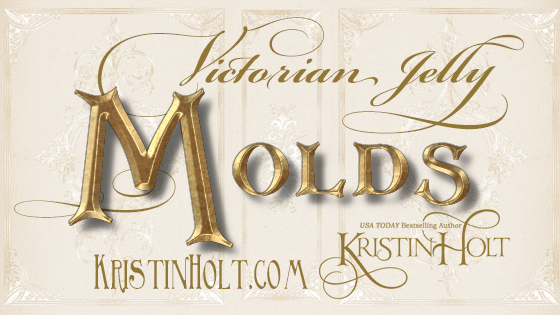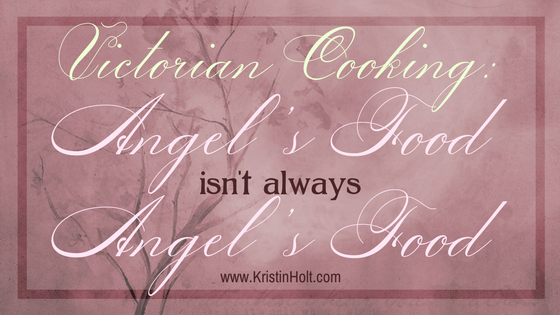
Victorian Jelly: Molds
Fancy jellies graced 19th century tables, molded in dishes made of tin, zinc, copper, and various ceramics. Photographs of antiques, together with vintage advertisements, illustrate this Victorian kitchen staple.

Fancy jellies graced 19th century tables, molded in dishes made of tin, zinc, copper, and various ceramics. Photographs of antiques, together with vintage advertisements, illustrate this Victorian kitchen staple.

Cake tins are often mentioned in Victorian-era Cook Books (as spelled in nineteenth century publications). This post provides historic images of this era’s baking pans from both newspaper advertisements and catalog ads (such as Sears and Montgomery Ward’s catalogs).
Many of the shapes and sizes are familiar to today’s baker’s options, and several have disappeared in the intervening years. My greatest surprise is the SIZE of Victorian cake pans. Compare to today’s, and see what I mean!

Angel Food Cake recipes are all very much the same from their inception in the late 1870s until today…
Until they’re not.
Who knew?
Angel’s Food isn’t always Angel’s Food.

The story behind the invention (development?) of Angel Food Cake is a bit shrouded in tales of “Me, First!” Vintage newspaper advertisements show Angel Food Cake for sale in bakeries by 1878, and in cookbooks for home bakers that same year. One of the origin stories made it into a vintage cookbook (“cook book”), along with minor variations on the fluffy, snow-white theme. No matter how the dessert began, the popularity took off among Victorian bakers and remained popular through the Edwardian and Progressive Era. One peek at Pinterest vouches that this brightly white cake is still popular (even when pink).